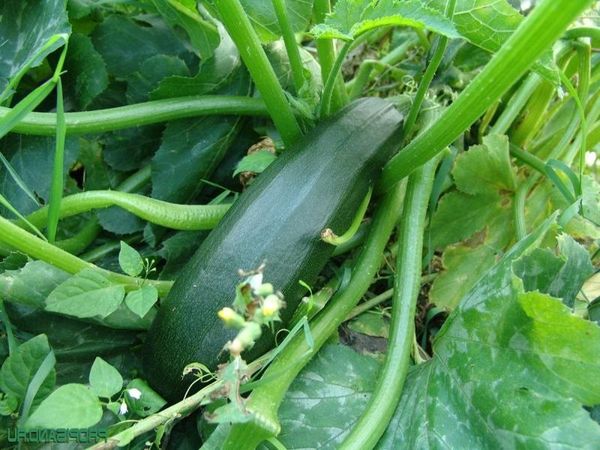Tsukesha - zucchini zucchini with excellent taste, thin skin, and high yield. In almost every garden area you can meet this handsome man with soft green, and then with malachite peel. Connoisseurs of early vegetables choose this variety for its quick response to care, the ability to use in early salads without cooking.
Table of contents
Description and characteristics of the zucchini varieties Tsukesha
Early ripe grade with unusually beautiful skin color.While the ovary weighs up to 200g., It is about 10-15 cm. It is used in fresh salads with skin.
Low level of the knitting substances and long time lack of grains - conditions due to which their choice is stopped on it. The variety is suitable for all types of storage and processing. According to the description, it is cold-resistant both at the time of growth and for storage.
Technical ripeness comes on 40 - 50 day. Fruits weighing 700-900g. From 1 sq.m. available 12-15 kg fruits.

Advantages and disadvantages
The advantages can be safely attributed to all the characteristics of the variety, and take into account that for more than 15 years the choice of farms and gardeners falls on this variety.
The advantages include:
- High yield;
- Precocity. This is important for replenishing early vegetables in the diet;
- Amazing delicate taste, milk pulp, lack of large seeds and voids in the core;
- Low soil requirements;
- High transportability;
- Keep up to 7-8 months in storage;
- High germination;
- Ability to use in all types of storage and processing.
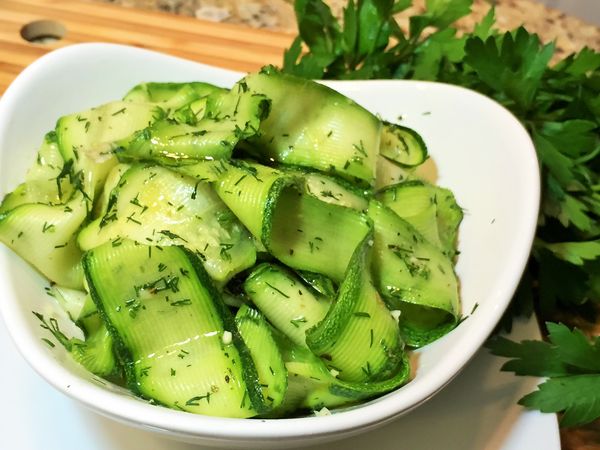
The disadvantages of this variety are minimal, and almost imperceptible in relation to the advantages:
- Demanding on irrigation and sunlight;
- It is difficult to transplant, and therefore it is better to sow the seeds directly into the ground, and to cover.
Seed preparation
Difficulties with planting seeds you will not have exactly. There are two options, and both are quite viable.
Landing
After a month and a half, and sometimes earlier, you will get excellent small ovaries up to 15 cm in size.
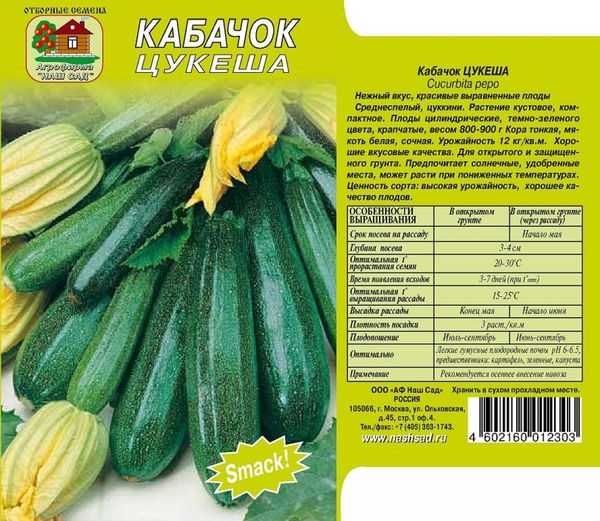
- Prepare high bed, it is better to organize a small greenhouse, inside which you can lay the spring compost mixed with manure.
- On top of the manure, fill in not less than 30 cm. land spill the whole bed with warm water and cover with foil.
- A day later, when you see that the bed has finished soaring, immerse your hand by 20 cm. in the garden bed. If the ground is slightly warm, but not hot, you can start planting.
If the temperature inside the garden bed is above 15 degrees, or you cannot determine it with accuracy, do not rush to the landing.Earth should be about like fresh milk.
Seedlings in pots
If you want to collect fresh zucchini for delicate vitamin salads already in June, you should start landing in April. For this, it is better to use peat pots, with which you will plant seedlings in the ground.
When planting seeds do not add fertilizer, otherwise the seedlings will be thin, will stretch and the ovaries will be small.
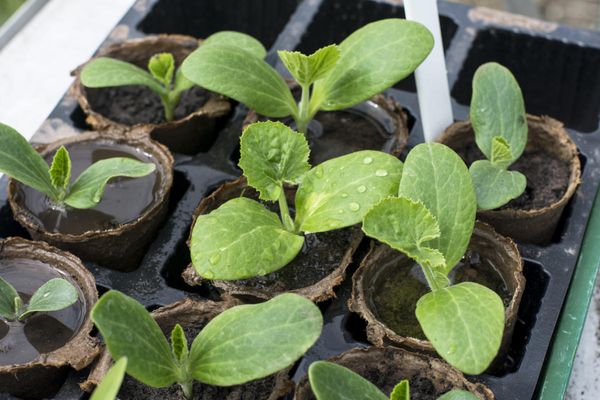
Landing technology
If you prefer to sow seedlings for early harvest, this option will do:
- Soak the seeds on gauze for three hours in warm water.
- Fill the pots with earth.
- Dampen the ground with warm water.
- Sow a seed no deeper than 2 cm.
- Cover the pots with film.
- When planting seedlings in the ground, be sure to spill the holes with a sufficient amount of water - so the peat pots dissolve faster and allow the roots to grow.
- After placing the pots in the wells, sprinkle with earth, squeeze the roots and spill again with water.
- Sure to cover the seedlings with covering material, otherwise direct sunlight will burn the leaves, and the plant will recover for a long time.
If you sow immediately to the ground, in late April - early May it is better to choose a natural greenhouse using compost and manure.
- After the bed has stopped "burning", open the film
- Rumble the top layer of earth, make pits depth 2 - 3 cm.
- Sow soaked seeds in the distance 20 * 30 cm apart. This will be enough, as the variety grows the lash, does not form several lashes from the root.
- Water the planting and cover with foil. Do not open before germination.
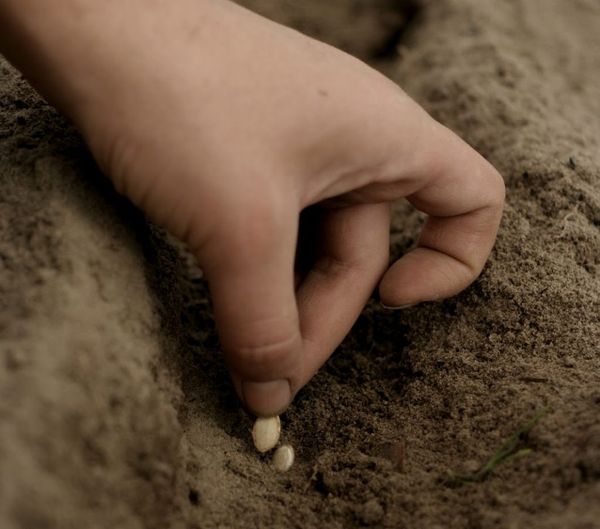
Care
As soon as shoots appear, it is necessary open the film and ventilate the greenhouse or garden bed during the day. Watering in the first week should be a little and often - the ground should not be dry.
Do not allow the soil around the seedlings to harden and become crusted. It is necessary to loosen as soon as the earthen crust is formed.
During the beginning of flowering must be carefully shed a bed water, and immediately after that, fertilize the manure diluted in water with fresh, infused day at the rate of about 1 kg. 10 liters of water.
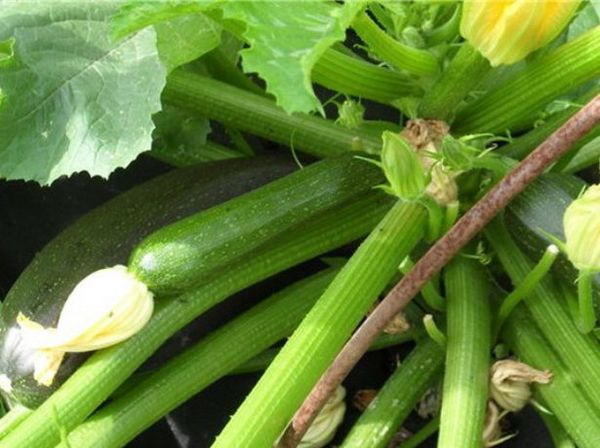
Disease and Prevention
Tsukesh very resistant to various kinds of diseases, and if you properly care for the plant, it may not let you know about any problems during the whole summer.
With the onset of cool nights and morning dew, the leaves can spoil, but this does not affect the quality of the fruit. Do not overdo it with fertilizer and the introduction of compost and manure - thanks to such top dressing the plant begins to increase the growth of foliage, and the fruits are tied in smaller quantities.
Harvesting and storage
You can start harvesting with the first small fruits, and from July it is necessary to visit the garden at least every 3 days. You should not miss the moment when zucchini starts to be fed in width, and form voids with seeds inside.
Mature zucchini reaches weight up to 1 kgand lengths up to 30 cm. When stored in a dark room with a temperature not higher than 15 degrees, and not lower than 7, vegetables winter well for 5-6 months.
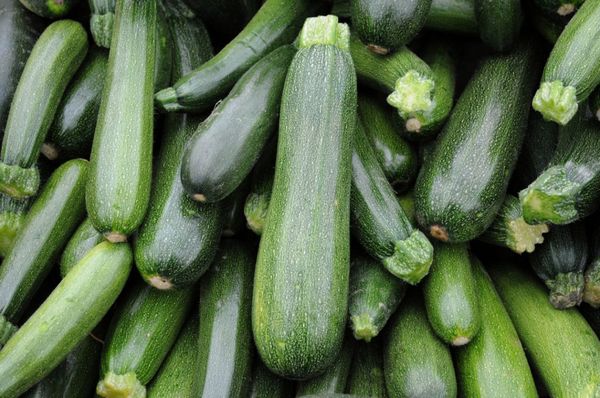
Unripe zucchini in a cool place or in the refrigerator can save no more than a month. If you wrap them in a newspaper or parchment with air access, you can hold them in the refrigerator for 1.5 months.
Canning, cooking caviar and salads for the winter is common among amateurs. The variety is excellent in processing, as it has a thin and soft skin, a light structure and very small seeds.
Tsukesha is suitable for any region and will allow even novice gardeners to feel experienced, experienced, farmers. The main thing - to have time to harvest.
